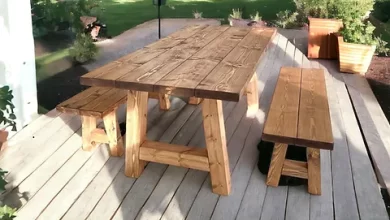How to install a water softener?
Water softener installation Tips

Water softeners are devices connected to plumbing networks that treat water by reducing its hardness using internal ion exchange resins. These protect the network from excessive scaling. The principle is to deplete the water in calcium and magnesium by exchanging them with sodium. The resulting water is soft water low in ions. It is recommended not to go below 10°F for soft water because below. It becomes corrosive causing damage to sanitary installations.
Why have a water softener in your home?
Heated hard water generates scale which can gradually form a thick layer capable of clogging pipes. Thermally insulating the resistors of household appliances (washing machine, dishwasher, coffee maker). Sanitary appliances (electric water heaters, faucets…). This leads to a surplus of energy for their operation. for example the coffee maker or the water heater take longer to heat the water, therefore a rising energy bill or in the case of sanitary appliances, a high bill more to heavy work on the plumbing. In addition, soft water is more pleasant in contact with the skin for the bath and makes the laundry softer and the dishes clean. Handy Man Service You Should Know
Installing a water softener?
The most common softeners are: the chronometric softener where regeneration is set per unit of time, and the volumetric softener (electronic and digital) where regeneration is triggered automatically according to the consumption of the volume of softened water. The network pressure must be between 2.5 and 6 Bar. Beyond that, a pressure reducing valve will be necessary. For installation, follow the steps below and use the instructions for use, if necessary:
Before you start:
- Close the network then leave a valve open to ensure depressurization;
- Make sure that an electrical outlet is nearby;
- Connecting the softener to the network bypass valve
- Remove the valve cover then the softener tank cover;
- Extract the by-pass valve and the transformer;
- Connect the inlet/outlet pipes to the bypass valve;
- To install the by-pass on the valve: remove the clips from the threads, the inlet/outlet threads, place the seals in the threads then replace the threads in the valve and finally insert the by-pass – pass in valve;
- Check if the volumetric meter sensor is connected and then connect the valve to the transformer and then the latter to the electrical outlet;
- Turn the valve to connect the softener outlet to the drainage network;
Installation and commissioning of the water softener:
- Leave an air gap between the drain pipe and the residual water to prevent it from returning to the softener;
- Connect a pipe to the overflow outlet to the drain (drain pipe) and install it independently of the drain outlet pipe;
- Use counter wrenches when tightening the various elements, and ensure that the seals are achieved thanks to the seals;
- Then fill the water softener tank halfway with water and pour a bag of salt tablets for softeners (25 kg) into it, avoiding putting any in the protection pipe of the brine pipe. ;
- Carry out the depressurization then run the water for a few minutes to eliminate the residues in the pipes
How much does a water softener cost on average?
If you have not yet made your choice and are still looking for the right water softener, then you have come to the right place and we will be able to advise you. Depending on the type of softener you are going to want to buy, the prices can be very different because there are several variants:
– a resin water softener
– a double tank water softener
– a CO2 water softener
– an osmosis unit
Average Cost of Water Softener Depending on the model you choose, this can save you a lot of money on your water bills. Indeed, it turns out that in some homes the water can be harder. A water softener can therefore reduce significant energy consumption. But it can also have a beneficial effect for all your appliances that use water on a daily basis, such as dishwashers or washing machines. They will indeed have a much longer lifespan. It is expected by the manufacturers, and you will also use fewer cleaning products such as soaps or detergents. In terms of prices, by searching for “water softener price“. you will see that you will have to count between 150$ for the cheapest and even up to 3000$ for the most expensive water softeners.








